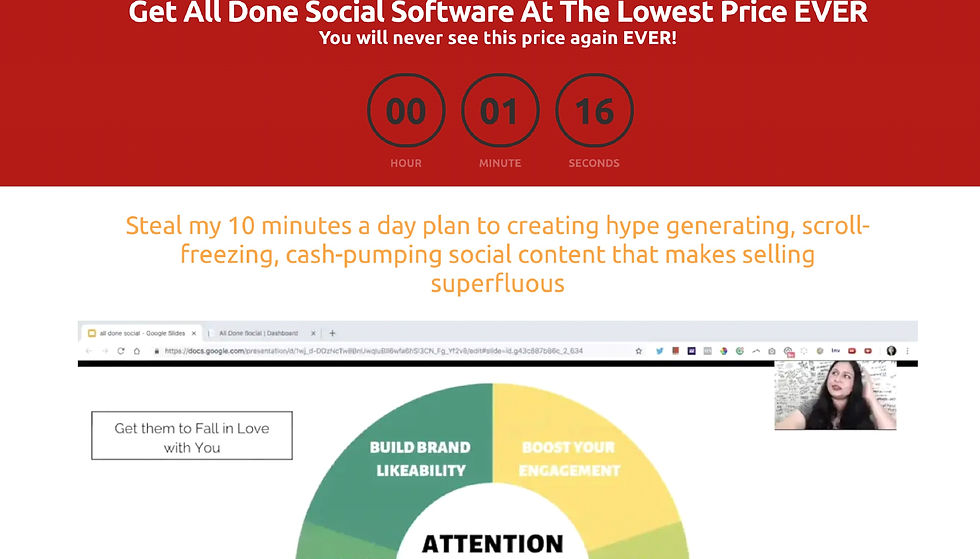How to Get Your Launch to Convert (With a Little Help From Microeconomic Theory)
- Eman Zabi

- Feb 16, 2019
- 5 min read
Updated: Aug 19, 2019

Want to rank your sales page and get recommendations on how to improve your conversion potential? Click here to take the free quiz.
If that title made you break out in hives, I’M SORRY.
I pinky swear to make this as fun as possible (and you might be able to buy a yacht when we’re done).
Now, I don’t know about you but graphs help me make sense of the world. In middle school, I used a spreadsheet and a graph to figure out whether a boy liked me back. Spoiler alert: He didn’t.
Good times.

Traditionally, in microeconomics theory, if you sketch out supply and demand graphs, it looks like this:

Here’s the Cliff’s Notes version of microeconomics 101:
Low price = High demand (because people will save $$$)
High price = High supply (because businesses will make $$$)
The equilibrium price is the sweet spot in the middle, aka perfect price and quantity for both supply and demand.
We cool so far?
Great.
Now, meet Susan.

Susan wants to launch a course titled:
Make Money on a Rock.
Your guide to becoming filthy stinking rich while sitting on a rock and balancing your laptop precariously on your knees.
Now, let’s assume that Susan has 15,000 people on her list and wants to push out her course to them.
No ads, just a sales page and emails to her list.
In the context of online business, let’s assume that Susan’s done a good job building a warm list who are eagerly awaiting an offer. Her list represents the demand for her course.
→ In other words, the more she sells, the lower her average cost per sale is.
Susan’s course is a digital product which means she doesn’t have to recreate it for each sale. So her cost per sale (or marginal cost if we’re being fancy) goes down the more she sells.
Essentially, Susan has an infinite supply and finite demand.
This means that she could, if she wanted, charge a lower price and capture more of the demand.
Here’s what Susan’s options look like:

Let’s assume it costs her $12,000 to produce the course. Now, let’s put actual numbers in and take a look at what her profit would look like at different conversion rates with the course priced at $100, $700, and $1500:

You don’t need to be an economist to figure out that the best case scenario is the highest possible conversion rate at the highest possible price.
High Conversion + High Price =

Now, before you’re off buying your yacht, let’s take a tiny step back.
There’s a tiny snag in our plan. Let’s go back to our emoji table:

So, if demand is lowest when your price is highest, how do we raise the demand (and our conversion rate) without dropping the price?
The answer, ladies and bumblebees, is by raising the course’s perceived value.
(You can buy your yacht now!)
Widening the gap between the price and perceived value is kinda like hiring a short person to stand next to you and make you look taller by comparison.

It’s all about relativity, darling.
The lower the price looks in relation to the perceived value, the more likely you are to make the sale, and the better your conversion rate.
So, how do you raise your perceived value?
10 Ways to Raise Perceived Value for Better Conversions
Scarce = Sales
One of the easiest ways to capture a small segment of the list at a higher price is to build exclusivity into the offer. Having a limited number of spots automatically builds scarcity into the offer, which in turn raises the perceived value.
For example, when Joanna Wiebe launched her copywriter mastermind last year, she had people apply and essentially compete for a spot.
This made people feel like they’ve earned the offer, or like they deserve it.
The perceived value in their mind immediately goes up.
Raise the opportunity cost
Opportunity = the potential gain from investing in Susan’s course.
Opportunity cost = the loss of potential gain from investing in Susan’s course.
Make the course look like the best darn thing since Prince’s 1998 tour.

Show them exactly what life could like post-Make Money on a Rock. Tell them about the breeze from the sea, the Mai-Tai also balanced precariously on the rock, tell them about not answering to anyone, the freedom to live on their own terms, etc.
And when you have them drooling, you’ve officially turned the perceived value up to an eleven and raised the opportunity cost.
Agitate
When your prospect enters your funnel, they have an itch that they need to scratch.
By the time they’re on your sales page, they need to feel like they’ve been doused in concentrated poison ivy and you’re the only one with an antidote.
Let’s say you’re on holiday in a balmy little seaside town in the middle of nowhere.
A crusty dude in a hat offers to sell you shark-repelling essential oils.

Your reaction:

You’re chatting with Susan, who swears that the shark-repelling oils have saved her from being attacked on her rock.
You start to get a teensy tiny bit worried, aka a little bit itchy.
And, then later that afternoon when you’re taking a dip at the beach, you feel something brush against your leg ever-so-slightly…
Let’s just say Captain Crusty will find you a lot more willing the next time you cross paths.
Build in copy that emphasizes who this course is not for
In woo talk, that’s: “Attract your tribe and repel the rest.”
Align your product with the qualities your audience wants to associate with, and spell out who the course isn’t for.
Here’s an example from Sober Glow’s event’s page.

Position yourself using comparatives
Use familiar comparisons to anchor the copy and use them to signal value.
For example, Tarzan Kay’s affiliate sales page for Amy Porterfield’s Digital Course Academy, she compared it to an MBA.

What do people know about MBAs? CEOs have them, and they’re crazy expensive. So, when Tarzan makes the comparison, not only is she anchoring DCA to the value an MBA provides, she’s putting in place a frame of reference for cost.
Light a fire under their ass

Tell them exactly what they’re going to miss if they don’t click that buy button right now. Even if you have unlimited spots in your course, time-sensitive or limited-quantity bonuses are a great way of building additional urgency into your launch.

Credit: Bushra Azhar
Think of it this way: Low supply, high demand = Scarcity (of time, spots or resources) = Higher perceived value.
Give away value
Increase perceived value by giving away some value during your launch. You want people to think, “If this is what she gives away for free, imagine what I’d get if I paid for her course!”
Go beyond webinars and build that extra value into your sales emails and sales pages.
Risk reversal
You’ve got to make it look like the biggest risk your reader is taking is waiting too long to buy. Make the terms of the guarantee explicitly clear. Pad your guarantee with testimonials, and make the sale a no brainer.
Testimonials
Use numbers where you can. I like to alternate between a testimonial with hard numbers (like 59% growth etc) and ones that talk about emotional/lifestyle impact (like more time with family, etc.).
Hire a copywriter
Lucky for you, I know where to find a good one. → Book a call.
Now, go buy your yacht.




Comments